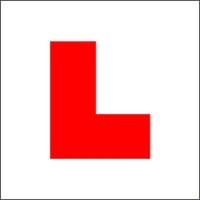FAQs
Why should I learn in an automatic?
Up until quite recently, the amount of pupils sitting their test in an automatic car in Britain was very low (only around 6%). The UK and Europe as a whole have been very slow to change to automatic vehicles. As of 2024, 44% of cars on European roads are currently automatic, whereas in the USA that number is 96%. However, this situation is changing, and fast.
The adoption of hybrid and fully electric technology in motor cars will eventually spell the end of the manual gearbox, as such vehicles are available as automatics only.
In just the last five years, sales of automatic vehicles in the UK have more than doubled, and since 2020, over half of all new cars registered in the UK have been automatic. The government have said that they will phase out the sale of new petrol and diesel-powered vehicles by 2035, and that will effectively end the sale of new manual vehicles.
If you intend to purchase an electric or hybrid vehicle once you pass your test, and if you are unlikely to ever want to drive a manual for whatever reason, then there is a good argument for learning in an automatic. Why learn a skill that you are never going to need?
But what if you want to buy a conventional car when you pass, what are the advantages of learning in an automatic?
The first reason is the most obvious. Automatics are far easier to learn to drive than their manual counterparts. There is no tricky clutch control to learn, no risk of stalling, you are unlikely to roll back or to fight to control the vehicle in the early stages of learning. Those reasons alone are enough for some pupils to discount learning manual altogether. Those who learn in an automatic also generally progress to test standard quicker than a pupil learning to drive a manual car.
Learning in an automatic, and thus not having any gears to worry about, effectively allows you to concentrate on the road ahead without distraction. There is no truth in the rumours you might have heard that automatics have reduced control compared to manual - modern automatics are perfectly safe, smooth, just as fuel efficient as manuals and are comparable to manuals to drive, the only difference being that you don't have to constantly change gear. This can be a boon in situations such as driving in stop-start traffic.
People seem to be very opinionated when it comes to automatic vehicles. If you are considering learning in an automatic, you will probably have had people share with you the usual nonsensical opinions such as "It's lazy driving" and "Automatic cars don't have as much control as manual ones".
Whilst it is true that if you take your test in an automatic, you will be restricted to driving automatics only, there is nothing to prevent you from upgrading your license to a manual one by taking another test at some point in the future, if you choose to do so. If that should be case, then as a driver with some experience you will not find the change to be too difficult.
No matter what your opinion of manual or automatic cars, we all need to accept that automatics are the future and that in a decade or so from now, you will not be reading this, as the default Practical Driving test will be held in an automatic car.
Wherever you are in your learning, if you think you might prefer to drive an automatic, please go ahead and contact me and you can take a trial lesson to see for yourself how well you get on.
When can I begin to drive?
You can apply for your provisional driving licence when you are 16, and you can have your first on-road driving lesson on your 17th birthday.
How much will learning to drive cost me?
This is probably the most commonly asked question when looking for a Driving Instructor!
Prices can be found on the 'Prices and Payment' page. You may well be considering an Instructor who has quoted you a very cheap price - ask yourself why they are cheaper; they may not be a fully qualified ADI. Anyone charging money or money's worth for driving lessons must, by law, be a PDI (Provisional Driving Instructor) or ADI (Approved Driving Instructor). Paying someone other than a PDI or ADI to teach you to drive is illegal; both you and they will be breaking the law, and could be fined. A PDI will display a pink badge in their windscreen, and an ADI a green one. These are shown below. Make sure any instructor you pick to teach you to drive is in possession of one of these badges.

You can rest assured that I am fully qualified, having passed the examinations set by the DSA (Driving Standards Agency).
A good driving instructor should teach, motivate, and structure an individual course to the pupil's needs. An instructor should push you forwards with the learning process, and not hold you back as some instructors might. Would you rather do 35-50 hours with an Instructor at £29/hr, or 60+ hours at £15 an hour with an instructor who may not be fully qualified?
How long are my driving lessons going to be?
That's largely up to you. The advantage of a longer driving lesson, is that you can cover more subject matter, and travel further afield. Shorter lessons can also work if your time is limited.

How long will it take me to pass?
According to the DSA (Driving Standards Agency), the national average is 46 hours with a Driving Instructor, and 22 hours of private practice. However, everyone is different, and the time taken will normally depend on your experience and confidence. Allowing around 6 months to progress from novice to licence-holder is a good rule of thumb.
Can I use my own car for lessons / the test?
Yes, you can. However, your car must be suitably insured, and must meet criteria set by the DSA. Certain vehicles are excluded due to their poor visibility from the passenger seat. Any car used must have head restraints and seatbelt fitted for use of the front passenger. It should be taxed, insured and MOT'd (if applicable), and should have no warning lights showing on the dash. It should have an interior mirror for use by the front passenger, and should be generally roadworthy. Lesson prices for pupils taking lessons in their own cars are the same as for those who use my tuition car.
What does the Practical Driving Test involve?
The following information is from the Driving Standards Agency:
" The eyesight check
The examiner will ask you to read the number plate on a parked vehicle to test your eyesight. If you fail the check, your driving test won't continue.
Vehicle safety questions: 'show me, tell me'
You'll be asked two vehicle safety questions. These are also known as the 'show me, tell me' questions. The 'tell me' question will be asked whilst stationary, whereas the 'show me' question will be asked once on the move.
The driving ability part of your driving test
The driving part of your test will last about 40 minutes. Throughout the test, your examiner will be looking for an overall safe standard of driving.
During your test the examiner will give you directions which you should follow. You'll drive in various road and traffic conditions. You should drive in the way your instructor has trained you.
You might also be asked to carry out an emergency stop.
Your ability to reverse your vehicle safely
You'll be asked to complete an exercise to show how well you can reverse your vehicle. The examiner will choose one exercise from:
- Driving forwards into a parking bay and reversing out.
- Pulling up on the right of the road, reversing back approximately two car lengths, then rejoining traffic.
- Parallel parking at the side of the road.
Independent driving section of the driving test
Your driving test will include around ten minutes of independent driving. This is designed to assess your ability to drive safely while making decisions independently. You may be asked to follow directions from a Satellite Navigation device (Sat Nav).
If you make a mistake during your test
If you make a mistake, don't worry about it as it might be a less serious driving fault and might not affect your result. However, if at any time your examiner considers your driving to be a danger to other road users they will stop your test.
Your driving test result
Yo ur result
ur result
You'll pass your test if you make:
- 15 or less driving faults
- no serious or dangerous faults
When the driving test has ended, you can call your instructor over for the debrief. This is so they can listen to the result and feedback with you.
The examiner will:
- tell you whether you passed or not
- explain briefly how you did during the test
- Arrange for an email to be sent to you with any faults listed in it.
The different types of faults that can be marked
There are three types of faults that can be marked:
- a dangerous fault - involves actual danger to you, the examiner, the public or property
- a serious fault - could potentially be dangerous
- a driving fault (minor) - not potentially dangerous, but if you make the same fault throughout your test it could become a serious fault
The pass mark for the driving test
You can make up to 15 driving faults and still pass the test. If you make 16 or more driving faults, you won't pass your test.
If you make one serious or dangerous fault, you won't pass your test.
If you pass your test
If you pass your test the Examiner will give you a pass certificate. They will also ask you if you want your full licence to be sent to you automatically. You can find out more about this service by clicking on the link below.
Once you have passed you test you can start driving straight away - you don't need to wait for your full licence to arrive.
Can I learn to drive with mum / dad and then just use your tuition car for my test?
No. Any pupil that I present to test will have undertaken several lessons me. I cannot reasonably be expected to risk the safety of you, the Examiner and the general public, by allowing my car out on test in the hands of somebody who's driving standard he cannot vouch for.
However, if you have been undertaking lessons with a parent or friend, and feel you are approaching test standard, then by all means book a few lessons with meto ensure that you are as best prepared as possible for the Practical Driving Test.
If you have any other questions, please do not hesitate to contact me on 07731 433495, or use the email form on the 'contact' page.